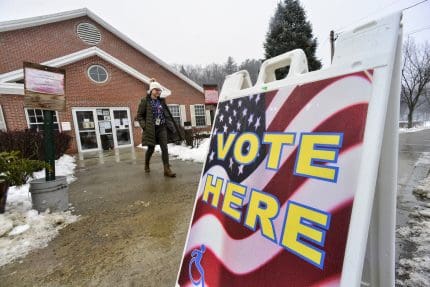GOP pretends climate change can't possibly affect immigration from Central America
Extreme weather events caused by climate change are forcing many Central Americans to leave their homes in search of safety.

Republican lawmakers are rejecting the idea that climate change has influenced the flow of immigration from Central America to the United States, suggesting instead that the Biden administration is the root cause of the issue, which they claim is a “crisis.”
Sen. Tom Cotton (R-AK) tweeted on April 23, “Solve climate change to stop the border crisis? Better idea: secure the border.”
“Kamala Harris believes climate change is the ‘root cause’ of the border crisis. Wrong. The root cause of the border crisis is the Biden Administration blaming everyone but themselves,” tweeted Rep. Lance Gooden on April 25.
“It couldn’t possibly be caused by the Biden admin stopping construction of the border wall or offering asylum to millions of illegal immigrants,” Rep. Jerry Carl (R-AL) tweeted on Tuesday.
The comments were a response to Vice President Kamala Harris, who said earlier on Tuesday at the Washington Conference on the Americas that worsening weather events caused by climate change, along with a lack of climate resilience, were partly responsible for the rise in immigration from Central America in recent years.
“We want to help people find hope at home. And so we are focused on addressing both the acute factors and the root causes of migration,” she said.
“First, the acute factors — the catastrophes that are causing people to leave right now: the hurricanes, the pandemic, the drought, and extreme food insecurity,” she continued. “And then there are the longstanding issues — the root causes — and I’m thinking of corruption, violence, and poverty; the lack of economic opportunity; the lack of climate adaptation and climate resilience; the lack of good governance.”
Harris’ comments are rooted in reality: Climate change has led to extreme weather events in many Central American countries, displacing its residents and prompting many to flee for safety in the United States.
As NASA noted, “Hurricane-associated storm intensity and rainfall rates are projected to increase as the climate continues to warm.”
Hurricanes Iota and Eta, for instance, devastated Central America in October and November 2020, displacing hundreds of thousands of people in a region already stricken with poverty.
“Floods are predicted to increase in Honduras by at least 60%. Guatemala will also be likely to experience unpredictable rainfall patterns characterized by extreme rainfall or none at all,” the Years Project, a nonprofit dedicated to climate change awareness, has reported. “Climate change plays a part in these extreme weather events because it creates warmer sea surface temperatures, which intensifies tropical storm wind speeds.”
Climate models from latest 2014 report from the Intergovernmental Panel on Climate Change predicted that most of the Central American region on average will also face moderate to severe drought by the end of 2100.
Scientific American noted that as as the climate warms, the likelihood of droughts increase, even if precipitation levels stay the same, since the rising temperatures lead to higher rates of evaporation from soil and vegetation. In 2019, extreme weather in Central America led to the fifth straight year that drought caused failed crop yields, forcing people into a dire lack of food and the need to migrate, according to the outlet.
President Joe Biden’s broader immigration plan proposes $4 billion over four years to aid the region and its residents, who have suffered from climate change’s impact.
As the advocacy group The Dialogue wrote in April, the aid package would include electric grid modernization and doubling the capacity of the Central American Electrical Interconnection System of six countries’ power grids, among other mitigation measures.
“Diversifying generation sources will reduce vulnerability to oil price spikes and droughts, and decentralization of generation and implementation of energy storage could increase resilience to disasters,” the group wrote. “The creation of solar microgrids with battery storage could bring electrification to the region’s remaining non-electrified rural areas without expensive transmission investments. Greater clean energy usage could also improve health in Central American cities.”
The investments in renewable energy could also create jobs in the region, leading to more economic development and reduced dependency on agriculture and manufacture, according to the group.
Published with permission of The American Independent Foundation.
Recommended

President Biden visits Prince William park to talk solar, youth involvement on Earth Day
Virginia set to receive $156 million from U.S. Environmental Protection Agency program
By Charlie Paullin, Virginia Mercury - April 23, 2024
Texas governor and attorney general do little to curb state’s chemical plant crisis
Republicans Greg Abbott and Ken Paxton have taken thousands of dollars in donations from chemical companies and their affiliated PACs.
By Jesse Valentine - December 08, 2023
‘We’ve been waiting for this’: Union workers cheer Biden’s hydrogen hub plan
Federal funding for the hub is estimated to bring over 20,000 jobs to the Pennsylvania-New Jersey-Delaware area.
By Anna Gustafson - October 17, 2023









































































